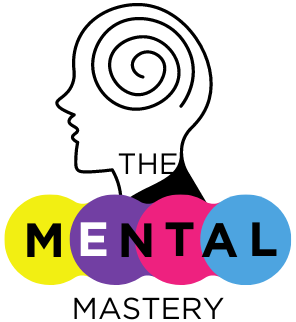What Are Thought Stopping Techniques and How Do They Work?
Introduction
The human mind is a strong instrument that can accomplish amazing things, yet it can also get caught up in negative thought patterns. If left unchecked, these intrusive thoughts can have a negative impact on mental health by escalating emotional disorders such as depression and anxiety. By interrupting and controlling these negative thinking patterns, thought stopping techniques offer a psychologically beneficial way for people to achieve emotional balance and mental clarity. However, how do these methods operate, and what makes them successful? Let’s examine the science and use of thought-stopping strategies in more detail.

Understanding the Basics of Thought Stopping Techniques
Thought stopping techniques are a cognitive-behavioural therapy (CBT) intervention aimed at interrupting intrusive or distressing thoughts. Fundamentally, thought stopping involves refocusing attention to more neutral or constructive thought patterns while interrupting a negative thought process in the middle, either by a physical or mental trigger.
For instance, someone who is anxious can be thinking about the worst-case scenario all the time. They can actively break that thought pattern by using a thought pausing technique, which will stop the situation from worsening and turning into a full-blown panic attack or prolonged discomfort. The technique entails recognizing the negative idea, stopping it, and replacing it with a healthier thought. When combined with other therapeutic approaches like mindfulness or relaxation exercises, this approach can be highly effective.
The Science Behind Thought Stopping
Thought stopping operates on principles found in cognitive-behavioural therapy (CBT), which is one of the most well-researched and widely applied forms of psychotherapy. Thought stopping is one technique used to control unpleasant thoughts in cognitive behavioural therapy (CBT), which focuses on altering negative cognitive distortions and behaviours. In effect, people are “retraining” their brains by deliberately stopping negative thought patterns. Neural plasticity, which enables the brain to change itself over time, has been demonstrated to result from this type of cognitive intervention (Kandel, 2014).
According to more recent studies, people may decrease the frequency and severity of their negative thoughts by using strategies like thought pausing (Beck & Haigh, 2014). This is achieved by weakening the neurological connections that fuel negative thought loops. Consistent practice of thought pausing can make it second nature, enabling people to remain resilient in difficult situations and preserve their mental health.
How to Use Thought Stopping Techniques
1. Awareness
The first step in using thought stopping techniques is becoming aware of the intrusive thought. Recognizing when you’re falling into negative thinking is crucial. Often, people don’t notice how one small negative thought can spiral into a series of overwhelming ones. Awareness means pausing when you notice a distressing thought and understanding that it can be controlled.
2. Interrupt
Once you’ve identified the negative thought, the next step is to actively interrupt it. This can be done in several ways:
Verbal command: Say “Stop!” either aloud or in your mind when you catch the negative thought forming.
Physical action: Some people find it helpful to snap a rubber band on their wrists or clench their fists. These physical actions create a sensory break in the mental loop, making it easier to shift focus.
Visualization: Imagine a stop sign or a barrier going up in your mind as soon as the negative thought arises. The visual cue acts as a mental “brake.”
3. Refocus
After the thought is interrupted, redirect your focus to something positive or neutral. It could be a relaxation technique such as deep breathing, repeating a positive affirmation, or engaging in a distracting activity like reading or going for a walk. The goal is to prevent the negative thoughts from returning.
4. Consistency and Practice
Thought stopping requires consistent practice. Like any skill, it becomes more effective the more you use it. Over time, individuals may find that they can stop negative thoughts earlier and with less effort.
Why Thought Stopping Techniques Work
The reason thought pausing is effective is that it breaks the cycle of cognitive distortions and replaces a more neutral or healthy thought pattern. According to cognitive-behavioural theory, people who suffer from obsessive-compulsive disorder, depression, or anxiety frequently have automatic negative beliefs that worsen their symptoms (Beck, 2011). People can interrupt the cycle of anxiety or worry before it gets out of control by putting an end to these thoughts.
Research indicates that cognitive restructuring, which includes thought stopping, helps reduce symptoms of anxiety and depression by shifting the way individuals perceive and react to stressors (Hofmann et al., 2015). When paired with mindfulness techniques, which emphasize staying present and non-judgemental, thought stopping can create a more comprehensive mental health strategy. The immediate interruption of negative thinking is powerful because it disrupts the automatic nature of these thoughts, allowing for a conscious choice in how to respond.
Common Misconceptions About Thought Stopping
While thought stopping can be highly effective, there are several misconceptions about it that are important to clarify:
- It’s not about repressing thoughts: One misunderstanding is that thought stopping simply involves pushing negative thoughts away, leading to suppression. In reality, thought stopping is about recognizing the thought, interrupting it, and consciously choosing a healthier alternative.
- It’s not a cure-all: Thought stopping is not a standalone solution to mental health issues. It’s a tool that works best when integrated with other therapeutic strategies such as mindfulness, journaling, or professional therapy.
- It’s not instant: Some individuals expect immediate results but thought stopping requires practice and persistence. It’s about gradually reducing the power that negative thoughts have over time.
Understanding the Role of Thought Stopping in Mental Health
Thought stopping is particularly useful for those who suffer from anxiety, depression, or obsessive-compulsive disorder (OCD). Research has highlighted its effectiveness as part of a broader CBT approach (Clark & Beck, 2014). People may reduce the frequency and severity of their distressing thoughts by integrating this strategy into their regular activities. It’s also crucial to remember that thought pausing can complement other mental health activities like relaxation and cognitive restructuring.
Having resources like thought stopping at one’s disposal gives people greater control over their emotional well-being in a society where mental health issues are becoming more and more common. It provides a quick and useful method to decrease the impact of negative ideas, even though it might not entirely eliminate them.
Conclusion
In cognitive-behavioural therapy, thought stopping strategies are an essential instrument that help people break bad thinking patterns and take back control of their mental environment. People can better manage stress, anxiety, and other mental health issues by learning to recognize intrusive thoughts, stop them, and shift their attention to more healthful alternatives. Even though these methods take time to master, they enable people to develop a stronger sense of emotional stability and resilience.
For those seeking long-term mental health solutions, incorporating thought stopping into a broader mental health toolkit can pave the way for improved emotional regulation and well-being. Consistency is essential, just like with any therapy method. People can gradually minimize the influence of negative thoughts and cultivate an optimistic mindset by consistently engaging in thought stopping exercises.
References
Beck, J. S., & Haigh, E. A. P. (2014). Cognitive therapy: Foundations, conceptual models, applications and research advancements. Annual Review of Clinical Psychology, 10, 1–24.
Clark, D. A., & Beck, A. T. (2014). Cognitive theory and therapy of anxiety and depression: Convergence with neurobiological findings. Trends in Cognitive Sciences, 18(6), 306–317.
Hofmann, S. G., Asnaani, A., Vonk, I. J., Sawyer, A. T., & Fang, A. (2015). The efficacy of cognitive behavioural therapy: A review of meta-analyses. Cognitive Therapy and Research, 36(4), 427-440.
Kandel, E. R. (2014). The age of insight: The quest to understand the unconscious in art, mind, and brain from Vienna 1900 to the present. Random House.







